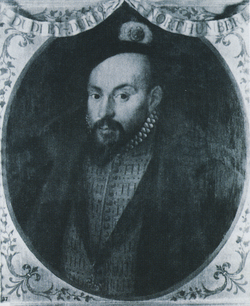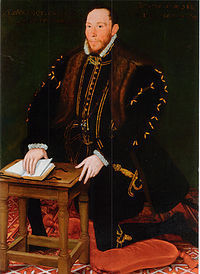Stephanie A. Mann's Blog, page 261
August 25, 2013
Blessed John Henry Newman and Blessed Dominic Barberi
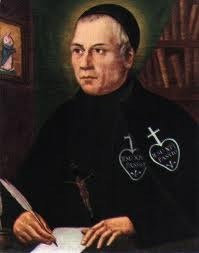 Today (in England) is the memorial of Blessed Dominic Barberi, probably best known as the Italian missionary priest who received Blessed John Henry Newman into the "one true fold of Christ" as Newman always said, on October 9, 1845. This essay, written by Fr. Adolfo Lippi for The International Centre of Newman Friends, describes the circumstances of that event:
Today (in England) is the memorial of Blessed Dominic Barberi, probably best known as the Italian missionary priest who received Blessed John Henry Newman into the "one true fold of Christ" as Newman always said, on October 9, 1845. This essay, written by Fr. Adolfo Lippi for The International Centre of Newman Friends, describes the circumstances of that event:“Dalgarins (sic) invited a certain Fr. Dominic of the Mother of God, a Provincial of the Passionists, to go to Aston Hall in Littlemore, telling him that he was being called to a work in the service of God: and unwittingly, he agreed. He was always conscious that every delay could possibly result in some great harm to the office to which he called. However because of a terrible storm he set out in a covered coach. He endured five hours of driving rain and, as it so pleased God, completely exhausted he arrived at Littlemore at night. Without delay he entered in the solitary dwelling of those fervent men who were famous throughout England, and with great humility Newman fell at his feet, telling him that he would not move from there until he was blessed and received into the Church of Jesus Christ.”
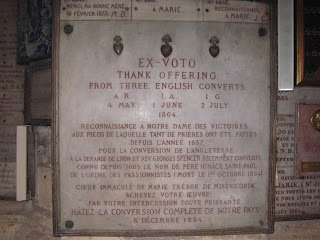
Father Lippi goes deeper into the connections between the Passionists and Newman, however, including Father Ignatius (George) Spencer:
There is another Passionist, who undoubtedly moved Newman’s spirit: George Spencer, the Anglican pastor of a noble family (the same as Lady Diana) who had already entered the Catholic Church in 1830. He had met Barberi in Rome and was certainly influenced by him who had preached a crusade throughout Europe for the return of England to the Catholic Church. Years later Leo XIII spoke about St. Paul of the Cross and meetings that the Pope had with George Spencer, who became Fr. Ignatius of the Heart of Jesus, at the nunciature in Brussels. George Spencer became a Passionist in 1846, two years before Newman published his novel [Loss and Gain]. . . .
The novel Loss and Gain was written by Newman after his conversion. Undoubtedly Newman was thinking about Spencer when Charles, the protagonist of the novel, meets his friend Willis who had become a Catholic before him and had become a Passionist with the name of Fr. Aloysius. There is a phrase, inspired by St. Augustine, which reveals some of the admiration of Newman for Spencer and, at the same time, conceals it. Precisely on the last page of the novel, Charles, the protagonist, says to his friend Willis who had become a Passionist, that he admired the first fervor of the new convert: “No, Willis…you have taken the better part betimes, while I have loitered. Too late have I known Thee, O Thou ancient Truth; too late have I found Thee, First and only Fair.”
And Father Lippi goes on to cite three quotations from Blessed John Henry Newman about his first confessor in the Catholic Church. Read rest here. More details about Blessed Dominic Barberi from a previous post on this blog here. The photo of the ex voto from three English converts, referring to George Spencer, is from Notre Dame des Victoires in Paris.
August 24, 2013
This Week's Reading Assignment
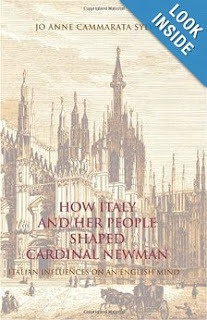 I'm almost to Italy in this book by Jo Anne Cammarata Sylva from Newman House Press--by that I mean that John Henry Newman is discussing that essential Mediterranean journey with Richard Hurrell Froude. Of course, Italy, including his visits to Rome and Sicily on that trip in 1833 are important sign posts on Newman's way to the Catholic Church. He would return to Rome as a seminarian preparing for the Catholic priesthood after his conversion in 1846, and then briefly on Oratory business in 1856, and finally in 1879 when he received his cardinal's hat. Sister and Dr. Brigitte Maria Hoegemann FSO wrote about Blessed John Henry Newman's visits to Rome particulary in the June 2008 Newsletter of the International Centre of Newman Friends: Long before the Anglo-Catholic Oxford don actually saw the city, its name must have resonated with John Henry Newman, evoking not just images of the ancient city, kingdom, republic and empire, its history of three thousand years, its rise and the fall, but also its huge claim to power and its unique culture of antiquity both pagan and Christian. Rome was not only a subject of special interest to the young Oxford student, but also the visible centre of the Catholic Church from the time of the apostles. Yet the don still had the conviction, learned as a boy at Ealing, that the Christian faith in Rome had over time become so corrupt as to be the work of Antichrist. The mere name of the city aroused in Newman notions, emotions and convictions both happy and painful. He describes an Anglican looking down on the city, who remarked: “the Christian can never survey (it) without the bitterest, the most loving and the most melancholy thoughts.”
I'm almost to Italy in this book by Jo Anne Cammarata Sylva from Newman House Press--by that I mean that John Henry Newman is discussing that essential Mediterranean journey with Richard Hurrell Froude. Of course, Italy, including his visits to Rome and Sicily on that trip in 1833 are important sign posts on Newman's way to the Catholic Church. He would return to Rome as a seminarian preparing for the Catholic priesthood after his conversion in 1846, and then briefly on Oratory business in 1856, and finally in 1879 when he received his cardinal's hat. Sister and Dr. Brigitte Maria Hoegemann FSO wrote about Blessed John Henry Newman's visits to Rome particulary in the June 2008 Newsletter of the International Centre of Newman Friends: Long before the Anglo-Catholic Oxford don actually saw the city, its name must have resonated with John Henry Newman, evoking not just images of the ancient city, kingdom, republic and empire, its history of three thousand years, its rise and the fall, but also its huge claim to power and its unique culture of antiquity both pagan and Christian. Rome was not only a subject of special interest to the young Oxford student, but also the visible centre of the Catholic Church from the time of the apostles. Yet the don still had the conviction, learned as a boy at Ealing, that the Christian faith in Rome had over time become so corrupt as to be the work of Antichrist. The mere name of the city aroused in Newman notions, emotions and convictions both happy and painful. He describes an Anglican looking down on the city, who remarked: “the Christian can never survey (it) without the bitterest, the most loving and the most melancholy thoughts.”Professor Sylva goes beyond Rome, of course, in this book, and looks at other crucial Italian influences in Newman's life--and pride of place must surely be Blessed Dominic Barberi, whose memorial we celebrate tomorrow! I'll let you know. Here is an interview with the author of How Italy and Her People Shaped Cardinal Newman: Italian Influences on An English Mind (a title I think should have been reversed!)
August 21, 2013
August 22, 1553 and 1572
On August 22nd, 1553, John Dudley, the First Duke of Northumberland, was executed for his role in the attempted coup d'etat to place his daughter-in-law, Jane Dudley (nee Grey) on the throne, diverting the succession from Mary Tudor as Queen of England and Ireland.
On August 22nd, 1572, Thomas Percy, Seventh Earl of Northumberland, was executed for his role in the Northern Rebellion, which might have had the result of deposing Elizabeth I and placing Mary, the erstwhile Queen of Scots on the throne of England and Ireland (and Scotland).
What a fascinating circumstance, that two scions of the same household would die on the same date, with 19 years separating their executions! These two men have another thing in common: at the block both of them spoke strongly of their Catholic faith. John Dudley reverted to Catholicism while in the Tower of London--perhaps he hoped for mercy from Mary--and he publicly retracted and regretted the efforts of the Edwardine government to introduce Calvinist reforms, warning the people against listening to deceptive preachers teaching new things:
And one thing more good people I have to say unto you, which I am chiefly moved to do for discharge of my conscience; that is to warn you and exhort you to beware of these seditious preachers, and teachers of new doctrine, which pretend to preach God's word, but in very deed they preach their own fancies, who were never able to explicate themselves, they know not today what they would have tomorrow, there is no stay in their teaching; doctrine, they open the book, but they cannot shut it again. Take heed how you enter into strange opinions or new doctrine, which hath done no small hurt in this realm, and hath justly procured the ire and wrath of god upon us, as well may appear who so list to call to remembrance the manyfold plagues that this realm hath been touched with all since we dissevered ourselves from the catholic church of Christ, and from the doctrine which hath been received by the holy apostles, martyrs, and all saints, and used through all realms christened since Christ.
And I verily believe, that all the plagues that have chanced to this realm of late years since afore the death of king Henry the eight, hath justly fallen upon us, for that we have deuvded ourself from the rest of Christendom whereof we be but as a spark in comparison: Have we not had war, famine, pestilence, the death of our king, rebellion, sedition among ourselves, conspiracies? Have we not had sundry erroneous opinions sprung up among us in this realm, since we have forsaken the unity of the catholic Church? and what other plagues be there that we have not felt?
Thomas Percy was stubbornly recalcitrant, in the Elizabethan government's view, as a Catholic, not repenting of his betrayal of Elizabeth, but warning the English that they were schismatic. While he was in prison, and on the scaffold, he was urged to conform to the Church of England and thus save his life, but he declared himself a lifelong Catholic and would not budge. In defiance of the norms of executions, he did not repent of his sins against the queen or warn others against committing such sins after him--his only regret was for the common people who suffered for their zeal in defending the Catholic Church. He is one of the Ten Blessed Martyrs of Sussex and a stained glass window honors him in Sacred Heart Church, Petworth.
August 20, 2013
Pope St. Pius X and Frequent Communion
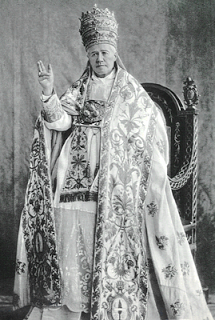 Allow me to draw your attention to an article I wrote last year for the PraytheMass.org website on Pope St. Pius X and his influence on liturgy, the age at which children receive First Holy Communion, and more frequent reception of Holy Communion:
Allow me to draw your attention to an article I wrote last year for the PraytheMass.org website on Pope St. Pius X and his influence on liturgy, the age at which children receive First Holy Communion, and more frequent reception of Holy Communion:Jansenism, a heretical movement beginning in France during the seventeenth and eighteenth centuries, discouraged frequent Communion. Pope St. Pius X referred to this problem in his “ Sacra Tridentina: On Frequent and Daily Reception of Holy Communion ,” issued on December 20, 1905: Piety, however, grew cold, and especially afterward because of the widespread plague of Jansenism, disputes began to arise concerning the dispositions with which one ought to receive frequent and daily Communion; and writers vied with one another in demanding more and more stringent conditions as necessary to be fulfilled. The result of such disputes was that very few were considered worthy to receive the Holy Eucharist daily, and to derive from this most health-giving Sacrament its more abundant fruits; the others were content to partake of it once a year, or once a month, or at most once a week. To such a degree, indeed, was rigorism carried that whole classes of persons were excluded from a frequent approach to the Holy Table, for instance, merchants or those who were married. Jansenism required such rigorous standards of preparation because of its overall belief “that there are some commands of God which just men cannot keep, no matter how hard they wish and strive” as stated in one of the five propositions condemned by Pope Innocent X in 1653. Although, as Pope St. Pius X wrote, several of his predecessors made statements against these rigorist views, The poison of Jansenism, however, which, under the pretext of showing due honor and reverence to the Eucharist, had infected the minds even of good men, was by no means a thing of the past. The question as to the dispositions for the proper and licit reception of Holy Communion survived the declarations of the Holy See, and it was a fact that certain theologians of good repute were of the opinion that daily Communion could be permitted to the faithful only rarely and subject to many conditions. The Pope pointed out that others went to the opposite extreme: They held that daily Communion was prescribed by divine law and that no day should pass without communicating, and besides other practices not in accord with the approved usage of the Church, they determined that the Eucharist must be received even on Good Friday and in fact so administered it. (Note that he was writing before the major revision of the Holy Week liturgy, which now includes a Communion service on Good Friday with Hosts consecrated at Mass on Holy Thursday.)
So Pope St. Pius X stated unequivocally that the laity were to be encouraged to receive Holy Communion frequently, even daily, as long as they had the correct disposition and were not in a state of Mortal Sin. He called on both factions to unite around this discipline and not place obstacles in the way of the lay faithful. For this document, and his decision on the proper age for First Holy Communion, Pope St. Pius X became known as “the Pope of the Eucharist”. In 1910 he approved a “ Decree of the Sacred Congregation of the Discipline of the Sacraments on First Communion ” setting the age of discretion or reason at about age seven. Inspired by the verse from the Synoptic Gospels: “Let the little children come to me, and do not hinder them, for of such is the kingdom of God”; he again urged that the Church unite around this discipline because of the sacramental benefits of Holy Communion. Giuseppe Sarto succeeded Pope Leo XIII in 1903 and began his reign at Pope Pius X with the motto “To Restore all Things in Christ” (Ephesians 1:10). Among other liturgical reforms, he also revised the Breviary and issued the motu proprio “ Tra le Sollecitudini ” in 1903 soon after becoming pope encouraging not only the revival of Gregorian chant in the celebration of Mass, but active participation by the laity in chant. He acknowledged progress in the arts by commending the use of Renaissance polyphony (especially the works of Palestrina), but warned against any “theatrical” or “profane” influences in liturgical music. Pope Pius X died in on August 20, 1914 at the beginning of World War I and was succeeded by Benedict XV. In 1954 he was canonized and his feast is on August 21 (since St. Bernard of Clairvaux’s feast is on August 20). Pope St. Pius X, the Pope of the Eucharist, pray for us!
Edward Short's Newman Trilogy
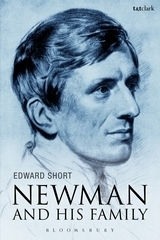 Edward Short sent me this link to the T&T Clark blog about a presentation he'll be making in London this September and more information about his Newman Trilogy: Newman and His Contemporaries; Newman and His Family; and Newman and His Critics:
Edward Short sent me this link to the T&T Clark blog about a presentation he'll be making in London this September and more information about his Newman Trilogy: Newman and His Contemporaries; Newman and His Family; and Newman and His Critics:Edward Short on Newman and his Family, the 2nd volume in his trilogy on John Henry Newman
Edward Short will be delivering a talk intitled Newman and the Idea of Sanctity on the 5th of September, 8pm at St Wilfrid's Hall, The London Oratory, UK. Below he speaks about his second book in his trilogy on Cardinal Newman. “ Newman and his Family is the second volume in my trilogy about the great priest, poet, satirist, novelist, educator, philosopher and theologian, John Henry Newman. If in the trilogy’s first volume, Newman and his Contemporaries , I looked at Newman and his friendships with Edward Pusey, John Keble, Emily Bowles, William Froude, and Lady Georgiana Fullerton, as well as his influence on such prominent Victorian figures as Thackeray, Matthew Arnold, Arthur Hugh Clough and Richard Holt Hutton, in my second book I look at Newman’s relationships with his immediate family. These were close and complex relationships, and they were instrumental in shaping how Newman viewed not only English society in its social, intellectual, religious and moral aspects but himself and his evolving Christian faith as well. Accordingly, there are chapters on each of the parents and each of his five siblings, Charles, Frank, Harriet, Jemima and Mary. There is also a chapter on his nephew, John Rickards Mozley, with whom Newman entered into a fascinating exchange of letters in 1875. Mozley inherited something of the scepticism of late Victorian Cambridge, with, however, nagging reservations, and I discuss how in many ways he resembles other uneasy sceptics of that age—Henry Sidgwick most particularly. Then, again, I discuss how Mozley and Sidgwick corroborated Newman’s sense of the diffidence of doubt, which only strengthened his appreciation for the appeal of faith, even for those most dubious about the grounds for faith. These are some of the intellectual and philosophical aspects of Newman’s familial relationships but in some of the other chapters, particularly those on Mary, Jemima, Harriett and Frank Newman I try to share with readers the deep love that Newman felt for his family, which, despite many trials, never wavered. In writing his mother from Lyons on his way back from the Mediterranean in July, 1833, Newman confessed how “The thought of home has brought tears in my eyes for the last two months.” The interrelated themes of home and love suffuse my book. So many of the differences that Newman experienced with his family and indeed with his contemporaries, especially after his conversion, arose as a result of conflicting ideas of home. And this, in turn, caused so much thwarted love! My book, then, as anyone familiar with the joys and sorrows of family life can see, is, in essence, a work of family history. Then he previews the third book that he's working on now: Now I am at work on the third book of the trilogy, which is entitled Newman and his Critics. In this final volume, I show what an enormous debt Newsman owed his critics. After all, they forced him to defend himself, to defend his various positions on faith and reason, orthodoxy and liberalism, belief and unbelief. They put him on his mettle. Consequently, one of the underlying contentions of this final book of the trilogy is that if Newman had not done battle with so many of his contemporaries--in most cases, affable, charitable, constructive battle—he would never have become the great defender of the faith that he became. It was precisely because he spent so much time addressing those who did not share his faith—and among those we must number many in his own family—that Newman became such a compelling apologist. The critics in my upcoming book include such lively, combative figures as Charles Kingsley and Sir James Fitzjames Stephen, as well as such former disciples as Mark Pattison and Anthony Froude. What is striking about these figures is how they hearken back to Newman’s brothers, Charles and Frank, who would never suffer their brilliant brother to persuade them of the tenability of faith, certainly not the Roman Catholic faith. In all three books, I have endeavored to show my readers that it is only by putting Newman in his immediate context, with his family and his contemporaries and his critics that we can begin to understand the full caritas and genius of the man.” I certainly look forward to seeing my review copy of Newman and His Family!
August 19, 2013
Misquoting Blessed John Henry Newman, Example #2
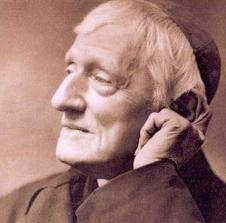 I mentioned the dangers of taking a sentence or two of Newman's out of context last week, citing the example of the "live is to change" quote. On Saturday, I found this example, in which the author of an article not only takes a quotation from Newman out of context, but also, because he uses a secondary source (not Newman's letters, collected so meticulously by Oxford University Press in 22 volumes) repeats an error from that secondary source. The citation is used in the context of a review of a book about Intelligent Design, and discovering the context of the quotation includes finding out what the ellipsis left out.
I mentioned the dangers of taking a sentence or two of Newman's out of context last week, citing the example of the "live is to change" quote. On Saturday, I found this example, in which the author of an article not only takes a quotation from Newman out of context, but also, because he uses a secondary source (not Newman's letters, collected so meticulously by Oxford University Press in 22 volumes) repeats an error from that secondary source. The citation is used in the context of a review of a book about Intelligent Design, and discovering the context of the quotation includes finding out what the ellipsis left out. Here is the quotation:
In the end, Darwin’s Doubt boils down to a fundamentally weak argument — the argument from personal incredulity about the origin and evolution of life on earth. As John Henry Newman wrote in 1872: “I have not insisted on the argument from design. . . . To tell the truth, though I should not wish to preach on the subject, for 40 years I have been unable to see the logical force of the argument myself. I believe in design because I believe in God; not in a God because I see design.”
Here are the first problems--chronology and sourcing--which the author of this article discovers:
I’d now like to pass to what Mr. Farrell has to say about John Henry Newman (who was later made a Cardinal) [and is now a Blessed of the Catholic Church]. His first error is one of chronology: Newman did not write the words quoted by Farrell in 1872, but in a letter to a Mr. Brownlow, dated April 13, 1870, quoted in Volume 2, Chapter 28 of Wilfrid Ward’s Life of Cardinal Newman. Why does the date matter? Actually, it’s quite informative. It is highly unlikely that two authors would independently make the same idiosyncratic error in their writings. Thus when I discover that Professor Michael Ruse, in an article he wrote in 2007, makes exactly the same error in chronology – in his article, Ruse refers to “a letter written in 1872″ by Newman, about “his seminal philosophical work, A Grammar of Assent,” and I can find no other source on the Internet making a similar mistake – I am forced to conclude that Farrell copied his information directly from Ruse’s article, without bothering to check his sources. (I hope Mr. Farrell will not accuse me of resorting to an “argument from personal incredulity” in making this inference.) But there’s more. Mr. Farrell’s quote from Newman’s contains an ellipsis … and that got me wondering what he’d left out.
Then the author, Vincent Torley, finds the entire letter and cites it:
‘The Oratory: April 13th, 1870.
‘My dear Brownlow, — It is very pleasant to me to hear what you say about my new book—which has given me great anxiety. I have spoken of the argument for the being of a God from the visible Creation at page 70 paragraph 1. “Order implies purpose”;. I have not insisted on the argument from design, because I am writing for the 19th Century, by which, as represented by its philosophers, design is not admitted as proved. And to tell the truth, though I should not wish to preach on the subject, for 40 years I have been unable to see the logical force of the argument myself. I believe in design because I believe in God; not in a God because I see design. You will say that the 19th Century does not believe in conscience either — true — but then it does not believe in a God at all. Something I must assume, and in assuming conscience I assume what is least to assume, and what most will admit. Half the world knows nothing of the argument from design — and, when you have got it, you do not prove by it the moral attributes of God — except very faintly. Design teaches me power, skill, and goodness, not sanctity, not mercy, not a future judgment, which three are of the essence of religion.’ (Emphases mine – VJT.)
Now, I'm not ready to turn this blog over to a discussion of Intelligent Design, but I am ready to note that it's so dangerous not to check sources and try to go back to the original source, especially when using secondary sources. Or, as Mr. Torley so succinctly states:
If there is a moral to be drawn from the above, it is this: never quote from eminent people without checking what they actually had to say.
The English Reformation and the Wars of the Roses
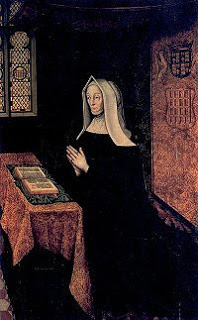 Leanda de Lisle, author of After Elizabeth, The Sisters Who Would Be Queen, and Tudor: Passion. Manipulation. Murder. The Story of England's Most Notorious Royal Family, visited this blog when I posted a link to her article on Anne Boleyn's execution with a sword and included a link to her article about Margaret Beaufort and her depiction in The White Queen, a BBC mini-series based on the Philippa Gregory book. The article reflects on how later generations, looking back on history through the lens of the English Reformation and the ongoing mistrust of Catholics in English Society, regarded Henry VII's mother with great suspicion, even shifting the blame for the murder of the Princes in the Tower from Richard III to Margaret Beaufort:
Leanda de Lisle, author of After Elizabeth, The Sisters Who Would Be Queen, and Tudor: Passion. Manipulation. Murder. The Story of England's Most Notorious Royal Family, visited this blog when I posted a link to her article on Anne Boleyn's execution with a sword and included a link to her article about Margaret Beaufort and her depiction in The White Queen, a BBC mini-series based on the Philippa Gregory book. The article reflects on how later generations, looking back on history through the lens of the English Reformation and the ongoing mistrust of Catholics in English Society, regarded Henry VII's mother with great suspicion, even shifting the blame for the murder of the Princes in the Tower from Richard III to Margaret Beaufort: Richard showed no more inclination than Edward IV to allow Henry Tudor home but when the princes vanished that summer and rumours emerged that Richard had ordered their deaths Margaret saw an opportunity. She suggested to the mother of the princes - the "White Queen", Elizabeth Woodville - that she agree to marry her eldest daughter to Henry Tudor. Edwardian loyalists could then combine with remaining Lancastrians to overthrow Richard and make Henry king.
Less than two years later Richard III was killed in battle at Bosworth and Henry Tudor was crowned. Margaret - the Red Queen - would gain huge political influence and become one of the richest women in England. Clearly she had benefited from the disappearance of the princes but it would not be until 110 years after her death that she would be accused of child murder. The accusations first arose only during the reign of witch-burning misogynist James I. This was the era of the Stuarts, the Tudor line was defunct and so it was possible to re-assess Henry Tudor's enemy Richard III in a more positive light. That meant finding someone other than Richard responsible for the disappearance of his nephews. Cases in which children disappear are haunting and no one has forgotten the story of the Princes in the Tower.
Margaret was an easy target, in part because of the praise that had been lavished on her by her priestly confessor John Fisher. England had undergone the Reformation. Stuart England was thoroughly Protestant and Margaret's Catholic spirituality was now condemned, while her intelligence and toughness of character were regarded with equal suspicion.
In 1646 conman George Buck, who was passing off a history composed in 1619 by a great uncle as his own, published his uncle's accusation that Margaret was a "subtle and politic lady" who had sought to kill the princes with poison and sorcery to clear the way for Henry. As we see in the novels of Philippa Gregory and the BBC's White Queen, it is as a child murderer that she is being portrayed again.
Read the rest here. It's a wonderful day when an author like Leanda de Lisle notices your blog! I've haven't read her Tudor history, or her depiction of Margaret Beaufort, but here is an article from History Today by Michael K. Jones, author of The King's Mother that provides a detailed analysis of her life and character, including this conclusion which refers to St. John Fisher's memorial of his benefactor:
The sermon which Fisher preached at Lady Margaret's month's mind compared her with Martha in the gospel, the epitome of virtuous activity. She seemed to him the ideal representative of God-fearing orderliness for their days, a noble patron tempering her power with a humility which showed itself in respect for individuals. Like Martha she was busy about her household: he notices her astute handling of discord, her care for her almsfolk, servants and strangers fed by her charity, as well as personal qualities like her readiness to learn. All the estates of the realm had reason to mourn her: the students and learned men because she was their mother and patron; the religious with whom she conversed, the clergy whom she protected, the nobility to whom she was an example of honour, and the commons for whom she acted as a mediator.
There are other features of this tender icon painted by Fisher which appear there only dimly, but more strongly in the reminiscences of Henry Parker. He pictures her sitting one New Year's Day under a cloth of state with her guests, a figure comparable for him with an Anglo-Saxon ruler, Elfleda Lady of the Mercians, or with Matilda wife of Henry I. Both of those led lives made politcally important by marriage and were symbols of piety and justice, but were also of strong passions and active characters. We get a glimpse of this side of Lady Margaret in Fisher's recollection of her saying often that if the Christian princes would war upon the enemies of Christ's faith, she would gladly go with them to wash their clothes, for the love of Jesus. Her tears of devotion, like those shed at her son's coronation, were perhaps signs of an intense nature concentrated upon its chosen aims. The aims were those demanded not only by her loyalty to God but to her son and the security of the royal house. It has been suggested that once at least her concern for wealth and power overcame her conscience: she neglected to fulfil a trust left by Cardinal Beaufort for the benefit of St Cross Hospital Winchester, although it clearly affected part of her estates.
Lady Margaret was, after all, the victim of politics from an early age: a prize passed from Suffolk to Edmund Tudor, even if she was able to accept her marriage with the latter as God's will. She learnt painfully during the dangerous years of war and of Edward IV's peace how to safeguard her interests and those of her son. She was a mature conspirator under Richard III, ready to suffer disaster before Henry's final triumph. Margaret, translator of The Mirror of Gold and inspirer of Henry Watson's translation of The Ship of Fools, had learnt the themes of reversal and penitence in a practical school. She was imbued with the courtly military ideals of her time; the recipient of a papal indulgence for her contributions to war against the Turks, the first book she commissioned from William Caxton in 1489 was of 'the noble acts and feats of war by a noble and victorious prince named Blanchardin... for the love of a noble princess called Eglantine'. As a patron, the employer of Caxton, Wynkyn de Worde and Pynson, and early helper of Skelton, she was for England a figure of Renaissance magnificence. Her epitaph was composed by Erasmus and her most moving likeness is the effigy sculpted by Torrigiano. Her great achievement was the self-discipline which allowed her to listen not just to the claims of power but to those of responsibility, whether for her own dependents or for the broader needs of religion and scholarship.
August 18, 2013
Two Martyrs on the Son Rise Morning Show
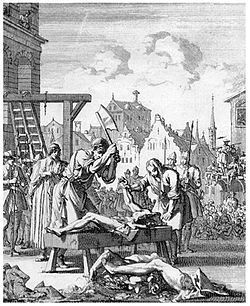 I'll be on the Son Rise Morning Show at 7:45 a.m. Eastern today to talk about two English martyrs who suffered tremendously when being hung, drawn, and quartered for their priesthood on August 19 in two different years: Blessed Christoper Robinson in 1598 (during the reign of Elizabeth I) and Blessed Hugh Green in 1642 (during the English Civil War).
I'll be on the Son Rise Morning Show at 7:45 a.m. Eastern today to talk about two English martyrs who suffered tremendously when being hung, drawn, and quartered for their priesthood on August 19 in two different years: Blessed Christoper Robinson in 1598 (during the reign of Elizabeth I) and Blessed Hugh Green in 1642 (during the English Civil War). Blessed Christopher Robinson had witnessed the brutal execution of St John Boste in July, 1594:
[St. John Boste] suffered at Dryburn, outside Durham. He recited the Angelus while mounting the ladder, and was executed with extraordinary brutality; for he was scarcely turned off the ladder when he was cut down, so that he stood on his feet, and in that posture was cruelly butchered alive. An account of his trial and execution was written by an eye-witness, [Blessed] Christopher Robinson, who suffered martyrdom shortly afterwards at Carlisle.
So when the rope broke twice at his execution, he complained of the physical AND mental cruelty of the process, according to Father Henry Garnet, SJ:
'One Robinson, a seminary priest, was lately in a purchased gaol-delivery hanged at Carlisle. The rope broke twice and the third time he rebuked the sheriff for cruelty saying that, although he meant no way to yield but was glad of the combat, yet flesh and blood were weak, and therefore he showed little humanity to torment a man for so long. And when they took order to put two ropes, then, said he, by this means I shall be longer a-dying, but it is no matter, I am willing to suffer all.’
The terms "hung, drawn, and quartered" roll rather trippingly off the tongue, but such a statement reminds us of the endurance these martyrs displayed and the love and passion for Jesus and His Church they had to endure such agony and torture.
Blessed Hugh Green suffered even greater indignity and cruelty, for he had no proper exeuctioner, not even one familiar with human anatomy: the barber forced into service for the purpose spent almost thirty minutes trying to locate his heart, removing his liver instead. A soldier finally beheaded the poor priest, and the Puritans in Dorchester used his head as a football after his death. Brutal.
August 17, 2013
Waugh's Helena, The Empress and Saint
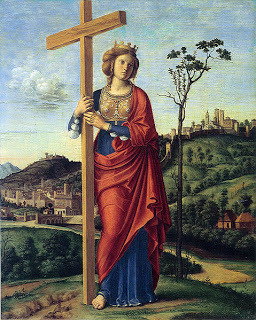 If today wasn't Sunday we would be celebrating the feast of St. Helena, the emperor Constantine's mother and finder of the True Cross. BTW: in the next issue of OSV's
The Catholic Answer Magazine
, I'll have an article about the September feasts of the Triumph of the Cross and the Sorrows of Mary; that's the September/October issue.
If today wasn't Sunday we would be celebrating the feast of St. Helena, the emperor Constantine's mother and finder of the True Cross. BTW: in the next issue of OSV's
The Catholic Answer Magazine
, I'll have an article about the September feasts of the Triumph of the Cross and the Sorrows of Mary; that's the September/October issue. As this site summarizes her life:
Empress mother of Constantine the Great. She was a native of Bithynia, who married the then Roman general Constantius I Chlorus about 270. Constantine was born soon after, and in 293, Constantius was made Caesar, or junior emperor. He divorced Helena to marry co Emperor Maximian’s stepdaughter. Constantine became emperor in 312 after the fateful victory at Milvian Bridge, and Helena was named Augusta, or empress. She converted to Christianity and performed many acts of charity, including building churches in Rome and in the Holy Land. On a pilgrimage to the Holy Land, Helena discovered the True Cross. She is believed to have died in Nicomedia. Her porphyry sarcophagus is in the Vatican Museum. Geoffrey of Monmouth, England, started the legend that Helena was the daughter of the king of Colchester, a tradition no longer upheld. In liturgical art Helena is depicted as an empress, holding a cross.
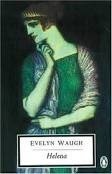 When Evelyn Waugh wrote his novel Helena, he maintained the Colchester legend and his heroine meets her husband (and Constantine's father) Constantius Chlorus when he visits her father. Waugh was very proud of his achievement in Helena, and George Weigel, who wrote the introduction to the Loyola Classics edition (I bought my Penguin edition during a trip to Brussels many years ago) comments on Waugh's purpose in writing the novel:
When Evelyn Waugh wrote his novel Helena, he maintained the Colchester legend and his heroine meets her husband (and Constantine's father) Constantius Chlorus when he visits her father. Waugh was very proud of his achievement in Helena, and George Weigel, who wrote the introduction to the Loyola Classics edition (I bought my Penguin edition during a trip to Brussels many years ago) comments on Waugh's purpose in writing the novel:At the same time, Helena was, and is, Waugh’s most intentional statement about the truth of Christianity, and about vocation – the divine call to a specific work in life – as the heart of Christian discipleship. Helena is full of biting historical and theological commentary (including a hilarious put-down of Edward Gibbon’s anti-Christian reading of Roman history). But, in the main, we are far, far away here from what one Waugh biographer calls the “jubilant malice” with which Waugh pilloried the California way of death in The Loved One. In Helena, Waugh explored, sparely but deeply, the question that shaped the last thirty-six years of his life – how does one become a saint?
In the course of his conversion to Catholicism, which took place in 1930, Evelyn Waugh came to the conviction that sanctity was not for the sanctuary only. Every Christian had to be a saint. And one of the hardest parts of that lifelong process of self-emptying and purification was to discover one’s vocation: that unique, singular something that would, in accord with God’s providential design, provide the means for sanctification. Helena’s sense of vocation, and the Christian scandal of particularity to which her vocation bore witness, was what attracted Waugh to the fourth-century Empress, whom the world remembers as the mother of the Emperor Constantine. Waugh later explained his choice in a letter to the poet John Betjeman, who confessed to being puzzled by the fact that, in the novel, Helena “doesn’t seem like a saint”:
"Saints are simply souls in heaven. Some people have been so sensationally holy in life that we know they went straight to heaven and so put them in the [liturgical] calendar. We all have to become saints before we get to heaven. That is what purgatory is for. And each individual has his own form of sanctity which he must achieve or perish. It is no good my saying, ‘I wish I were like Joan of Arc or St. John of the Cross.’ I can only be St. Evelyn Waugh – after God knows what experiences in purgatory.
"I liked Helena’s sanctity because it is in contrast to all that moderns think of as sanctity. She wasn’t thrown to the lions, she wasn’t a contemplative, she didn’t look like an El Greco. She just discovered what it was God has chosen for her to do and did it. And she snubbed Aldous Huxley with his perennial fog, by going straight to the essential physical historical fact of the redemption."
Waugh was not a proselytizer, and Helena is no more an exercise in conventional piety than Graham Greene’s The Power and the Glory, whose hero is an alcoholic priest. But Waugh was a committed Christian apologist, and his apologetic skills are amply displayed in Helena. Thus Helena was not only addressed to those Christians who were trying to figure out the meaning of their own discipleship; it was also intended as a full-bore confrontation with the false humanism that, for Waugh, was embodied by well-meaning but profoundly wrong-headed naturalistic-humanistic critics of the modern world like Aldous Huxley and George Orwell.
Read the rest of Weigel's comments here.
August 16, 2013
Two Books by Timothy Larsen: Religion in the Victorian Era
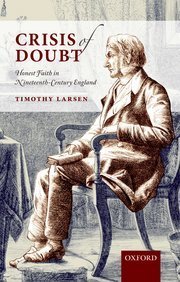 Thanks to a friend, who paid me the undeserved compliment that I know everything about English history and literature, I discovered first, this post about the Victorian autodidact Thomas Cooper and then these two books by Timothy Larsen, who is the Carolyn and Fred McManis Professor of Christian Thought at Wheaton College:
Crisis of Doubt: Honest Faith in Nineteenth-Century England
A revisionist study that challenges the existing, dominant narrative of the Victorian `crisis of faith'Significant for literary, historical, and cultural readings of the Victorian eraAppendix including mini biographies of key personalities in the study for ease of referenceThe Victorian crisis of faith has dominated discussions of religion and the Victorians. Stories are frequently told of prominent Victorians such as George Eliot losing their faith. This crisis is presented as demonstrating the intellectual weakness of Christianity as it was assaulted by new lines of thought such as Darwinism and biblical criticism. This study serves as a corrective to that narrative. It focuses on freethinking and Secularist leaders who came to faith. As sceptics, they had imbibed all the latest ideas that seemed to undermine faith; nevertheless, they went on to experience a crisis of doubt, and then to defend in their writings and lectures the intellectual cogency of Christianity. The Victorian crisis of doubt was surprisingly large. Telling this story serves to restore its true proportion and to reveal the intellectual strength of faith in the nineteenth century.
Thanks to a friend, who paid me the undeserved compliment that I know everything about English history and literature, I discovered first, this post about the Victorian autodidact Thomas Cooper and then these two books by Timothy Larsen, who is the Carolyn and Fred McManis Professor of Christian Thought at Wheaton College:
Crisis of Doubt: Honest Faith in Nineteenth-Century England
A revisionist study that challenges the existing, dominant narrative of the Victorian `crisis of faith'Significant for literary, historical, and cultural readings of the Victorian eraAppendix including mini biographies of key personalities in the study for ease of referenceThe Victorian crisis of faith has dominated discussions of religion and the Victorians. Stories are frequently told of prominent Victorians such as George Eliot losing their faith. This crisis is presented as demonstrating the intellectual weakness of Christianity as it was assaulted by new lines of thought such as Darwinism and biblical criticism. This study serves as a corrective to that narrative. It focuses on freethinking and Secularist leaders who came to faith. As sceptics, they had imbibed all the latest ideas that seemed to undermine faith; nevertheless, they went on to experience a crisis of doubt, and then to defend in their writings and lectures the intellectual cogency of Christianity. The Victorian crisis of doubt was surprisingly large. Telling this story serves to restore its true proportion and to reveal the intellectual strength of faith in the nineteenth century.1. Crisis of Faith
2. William Hone
3. Frederic Rowland Young
4. Thomas Cooper
5. John Henry Gordon
6. Joseph Barker
7. John Bagnall Bebbington
8. George Sexton
9. How Many Reconverts Were There?
10. Crisis of Doubt
and
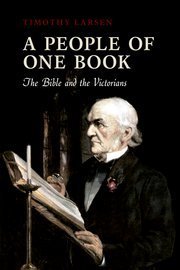 A People of One Book: The Bible and the Victorians
A People of One Book: The Bible and the Victorians
Presents the use of scripture as a unifying key to Victorian culture.Provides an introduction to the diversity of Victorian beliefs including reference to Catholic, Unitarian, Quaker, atheist, agnostic, liberal Anglican, Spiritualist, Salvation Army perspectives.Gives in-depth case studies of key figures including Florence Nightingale, T. H. Huxley, C. H. Spurgeon, Catherine Booth, E. B. Pusey, Charles Bradlaugh, Nicholas Wiseman, Grace Aguilar, Annie Besant, and Josephine Butler.Although the Victorians were awash in texts, the Bible was such a pervasive and dominant presence that they may fittingly be thought of as 'a people of one book'. They habitually read the Bible, quoted it, adopted its phraseology as their own, thought in its categories, and viewed their own lives and experiences through a scriptural lens. This astonishingly deep, relentless, and resonant engagement with the Bible was true across the religious spectrum from Catholics to Unitarians and beyond.
The scripture-saturated culture of nineteenth-century England is displayed by Timothy Larsen in a series of lively case studies of representative figures ranging from the Quaker prison reformer Elizabeth Fry to the liberal Anglican pioneer of nursing Florence Nightingale to the Baptist preacher C. H. Spurgeon to the Jewish author Grace Aguilar. Even the agnostic man of science T. H. Huxley and the atheist leaders Charles Bradlaugh and Annie Besant were thoroughly and profoundly preoccupied with the Bible.
Serving as a tour of the diversity and variety of nineteenth-century views, Larsen's study presents the distinctive beliefs and practices of all the major Victorian religious and sceptical traditions from Anglo-Catholics to the Salvation Army to Spiritualism, while simultaneously drawing out their common, shared culture as a people of one book.
Introduction
1. Anglo-Catholics: E. B. Pusey and Holy Scripture
2. Roman Catholics: Nicholas Wiseman and Sacred Scripture
3. Atheists: Charles Bradlaugh, Annie Besant, and 'this indictable book'
4. Methodist and Holiness: Catherine Booth, William Cooke, and the Scriptures
5. Liberal Anglicans: Florence Nightingale and the Bible
6. Unitarians: Mary Carpenter and the Sacred Writings
7. Quakers: Elizabeth Fry and 'Reading'
8. Agnostics: T. H.Huxley and Bibliolatry
9. Evangelical Anglicans: Josephine Butler and the Word of God
10. Orthodox Old Dissent: C. H. Spurgeon and 'the Book'
Conclusion: Spiritualism, Judaism, and the Brethren - A People of One Book
You may read samples from the first book here and of the second, here Both look absolutely fascinating!

